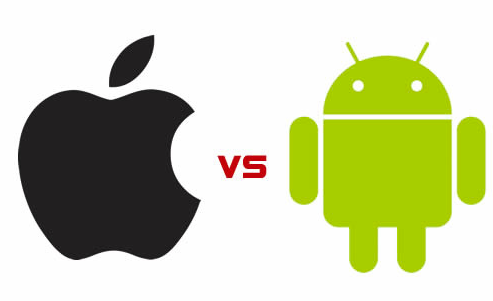Four Enterprise Verticals Choosing Android Over iOS and Why

So, what makes these industries different from other enterprise verticals? What aspects of these devices are being considered when choosing between Android and iOS? The following are three factors organizations within these enterprise verticals may have considered when choosing Android over iOS:
Factor #1: Security
In a recent CITEworld article titled “In these four industries, Android totally dominates iOS,” author Chris Nerney argues that Android’s greatest impediment to the enterprise is security fears, because Google’s open-source mobile platform is a prime target for malware. In fact, according to a report by NQ Mobile, “more than 32.8 million Android devices were infected over the course of 2012, up more than 200 percent from 2011.”
Although security is a major impediment for Android in the enterprise, it has not hindered overall adoption. For organizations concerned about other factors—more so than security—and organizations equipped with policies to deal with potential malware threats, Android is a viable option for their mobile workforce.
Factor #2: Cost
As Nerney points out in his article, the industry verticals where Android appears to be dominating have a common theme: they tend to be mobile field service organizations. Although many of these professions—including healthcare workers and administrative staff—are often part part of a highly distributed workforce (thus contributing to the need for mobile devices) smaller profit margins within the industry may mean they have less to spend on mobile devices. With a lower price-point, Android devices seem to be winning over iOS—and sometimes even laptops—in industries where budgets are tight.
Lower price-points also mean that organizations can be less concerned with the physical device. As Tom Maxwell, Chief strategy office for Homecare Homebase, explained in another recent CITEworld article, the low price-point of some of these Android devices, specifically the Samsung Galaxy Tab, devices makes them “almost disposable.”
Factor #3: Flexibility
In the same article about a home health care company that opted for Galaxy Tabs over iPads, author Todd R. Weiss explains that the various sizes and configurations in which Android devices are available was another reason that the organization chose Android devices over iOS.
Security, cost, and flexibility are all compelling factors for an organization to consider when implementing mobile devices. When organizations must choose which of these factors are most important to the success of their business, the hardware that best supports those needs is likely be adopted by that organization and others within the industry.
However, what if your organization could provide security, a CFO-friendly price tag, and the ability to manage every computer and device—without requiring employees to use specific hardware? In the age of BYOD and IT consumerization, MokaFive is providing just that solution. M5 uses virtualization technology to create a secure corporate environment using employees’ devices—including iPads and iPhones. That means that your organization can choose the best solution based on all these compelling factors, not just one or two.
What factors does your organization consider when deciding what type of mobile device to implement? Is your organization strictly Android, iOS, or a combination of the two? Leave a comment below to let us know.
